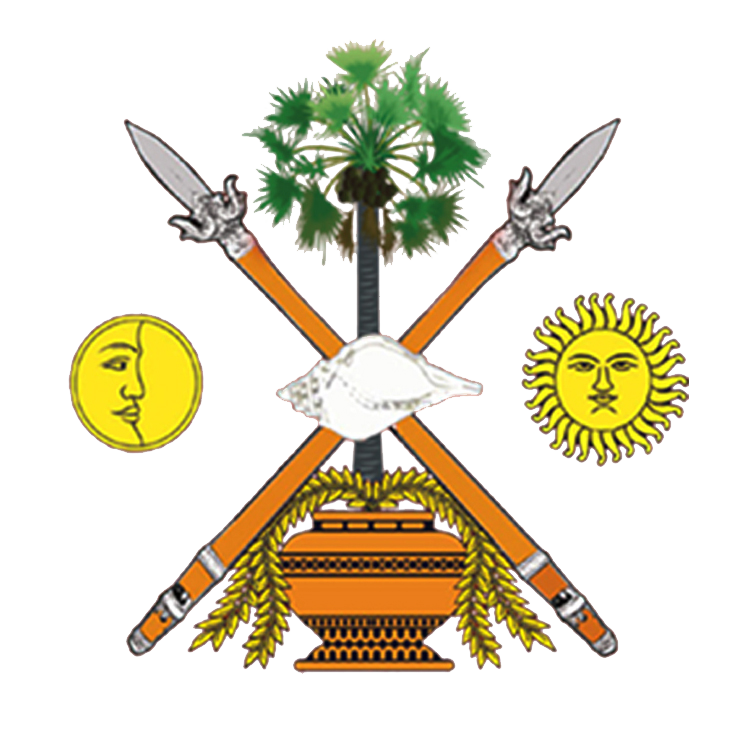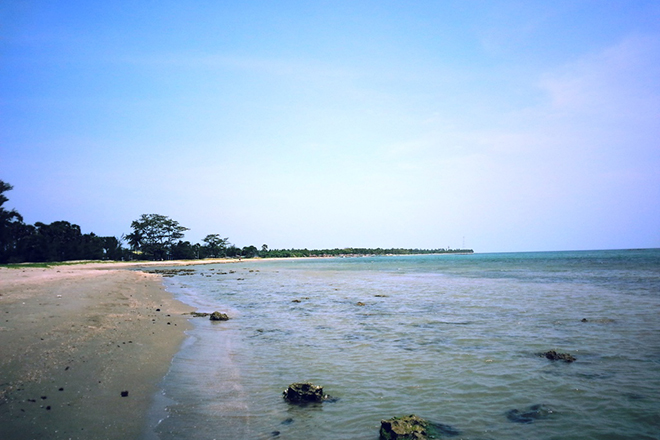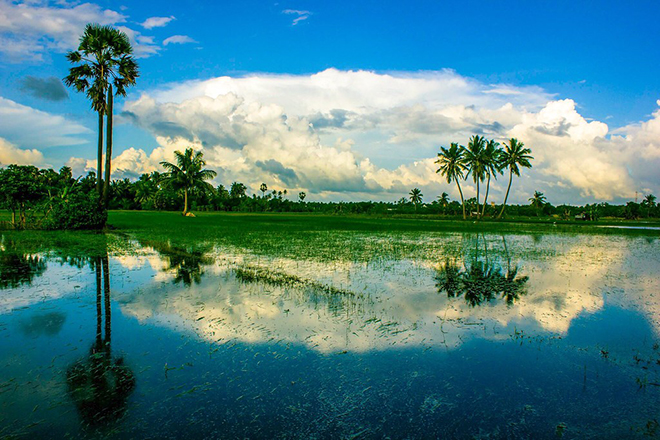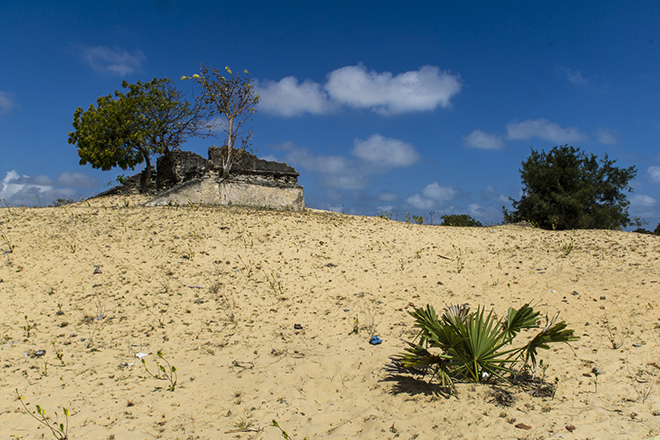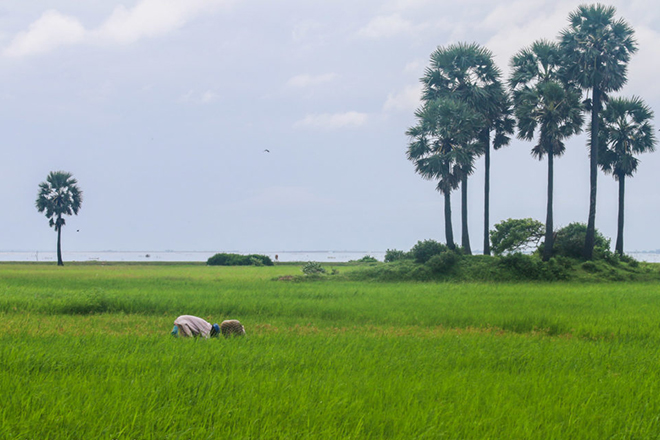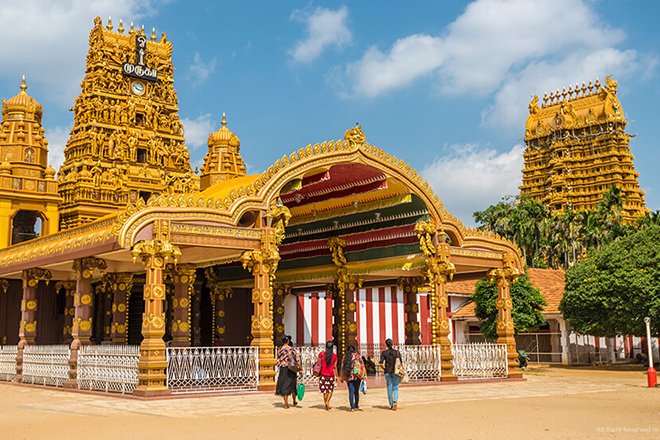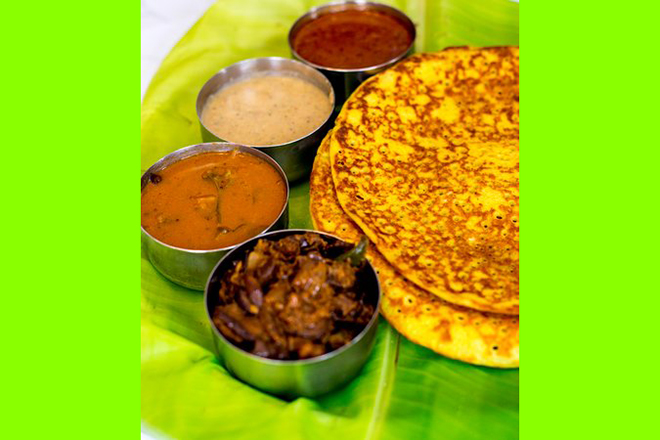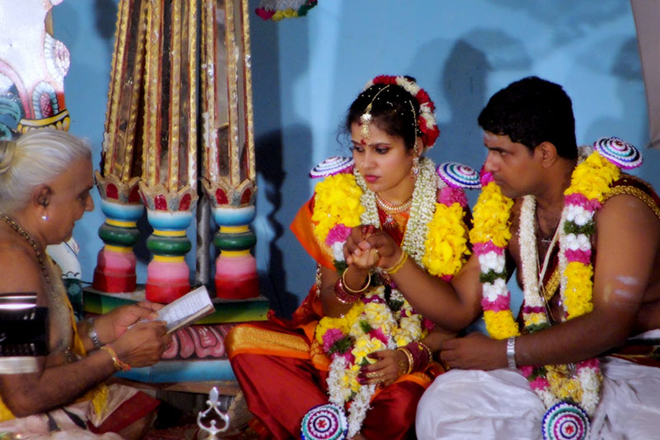NATURAL ATTRACTIONS
Jaffna's natural characteristics range from semi - deserts of sand dunes reaching heights of 12- 15 meters at Manalkattu to numerous expanses of water. The waterscape offered by the Jaffna lagoon, which is dotted by several islands is outstanding; the outriggers and catamarans of flamboyant colours that are sailing in the lagoon make a beautiful picture of the calm blue waters. The long stretches of unspoilt, secluded beaches (like Casuarina beach and Kalmunani point near Jaffna, Thondamannar, Senthankulam and Keeramalai) are ideal for sunbathing, swimming and water skiing, as well as for sailing. A drive along the causeways linking the chain of Jaffna islands (like Kayts, Karaitive and Pungudutivu) is rewarding for the beautiful sunset is affords with austere palmyrah palms stand silhouetted against the glorious sky. Other islands like Nagadeepa and Delft are reachable only by ferry. Such a natural setting to Jaffna with its considerable water front has the potential to be developed as the Venice of Asia Delft, about 32 Km, south - west of the Jaffna peninsula is the outer most inhabited island. Its shore line is unique in that coral rock stands out on the beach and out at sea above the water, having peculiar and fantastic formations. Its beaches are unspoilt and the waters are shallow. It is rich in natural habitat, where one could hear the cries of sea birds, heighing of ponies, mooning of cattle, bleating of goats, and the boom of the surfs with a mix of gentle whisper of the wind. To a visitor interested in bird watching, the Jaffna islands will prove fascinating, with considerable presence of grey partridge, curlew, plover, ring dove, Indian courser, great stone plover, reef heron, lapwings, egrets and many more. It also offers fascinating
CULTURAL ATTRACTIONS
The culture of the Jaffna peninsula has been moulded by its harsh climate, and by the protean Hindu religion, its mythology and legend. The well at Puttur, which the inhabitants believe as bottomless, is some 45 meters deep and legend has it that Rama, the hero of Epic Ramayana of Indian fame, stopped here and plunged his arrow into the soil, whence water came spurting out and he quenched his thrust from this spring that never dies. The island Kayts, according to legend, is said to be the location, from which one of the three Magi came bearing gifts for the infant Jesus. It is also believed that ships of king Soloman traded at the Kayts harbour.
There are several Hindu temples of outstanding architectural characteristics in the peninsula, of which those at Nallur in the mainland and Nagapoosani Kovil at island Nagadeepa are the most popular. Hindu religious festivals have an atmosphere all its own. It is a feast of music, dance and colour. The last day of festival is marked by a colorful procession.
There are numerous heritage sites dating from the pre - Christian time to colonial era. The Buddhist site at Kantarodai near Chunnakam dates from Pre - Christian times to about the 12th century A. D Sangalitoppu at Nallur was the residence of the provincial rulers of Jaffna, before the advent of Portuguese. Several remains including an ornamental entrance arch to the palace complex, depicting colonial influences, still survives.
Despite the Jaffna fort, which is the major heritage attraction of the peninsula, there are several monuments and sites of the colonial era. The island of Delft has monuments (like its castle) that still reflect Portuguese characteristics in a skeletal form. There are smaller Dutch forts at Elephant pass, Kayts, Pooneryn and at he small islet of Hammenhiel. The remains of Dutch Church with it Portuguese origin still stands at Chankanai. Considered as architecturally, the only one of its kind in the Island, it was constructed of coral masonry with its foundations going back to 1640s.
Apart from such cultural attraction, Jaffna peninsula is also a place of pilgrimage. The fresh water spring on the beach at Keeramalai are said to contain healing water and is a popular pilgrim destination. The island Nagadeepa is said to have been hallowed by a visit of the Lord Buddha. The Sinhala Buddhists from south visit the Buddhist temple in this island to pay homage to their Master. This island is also a popular pilgrim destination of the Hindus, and the Hindu temple of Nagapoosani and the Buddhist temple that stand side by in this island showcase the religious tolerance. Katchchativu and Palaitivu are popular destinations of Christian pilgrimage where Catholics from Sri Lanka as well as from neighboring India come there in thousands.
Therefore, for the local visitor, the extra-ordinary landscape features of Jaffna, with palmyrah trees, arid climate, and the presence of Hindu, Buddhist and Christian shrines are the main attractions. Apart from developing Jaffna as a major destination of tourism in Sri Lanka, it has the potential to build the ethnic and religious harmony of this war torn country. For a foreign visitor, the contrasting landscape features, cultural and bio-diversity, the monuments of colonial era, etc. provide opportunities for eco - tourism and nature-culture tourism. Therefore from an international point of view, if promoted and marketed properly, Jaffna has all the potential to be developed as a major tourist destination in South Asia by tailoring it into a showcase which combines beach/marine experience and cultural legacy. The improved connectivity in the near future by air and land for tourists will also facilitate such a Development, The close connectivity to Trincomalee of eastern sea board and even to Southern India will further enhance to develop tourism.
Since the war has come to an end, with higher level of security and safety, Jaffna is slowly becoming conducive to develop tourism.
